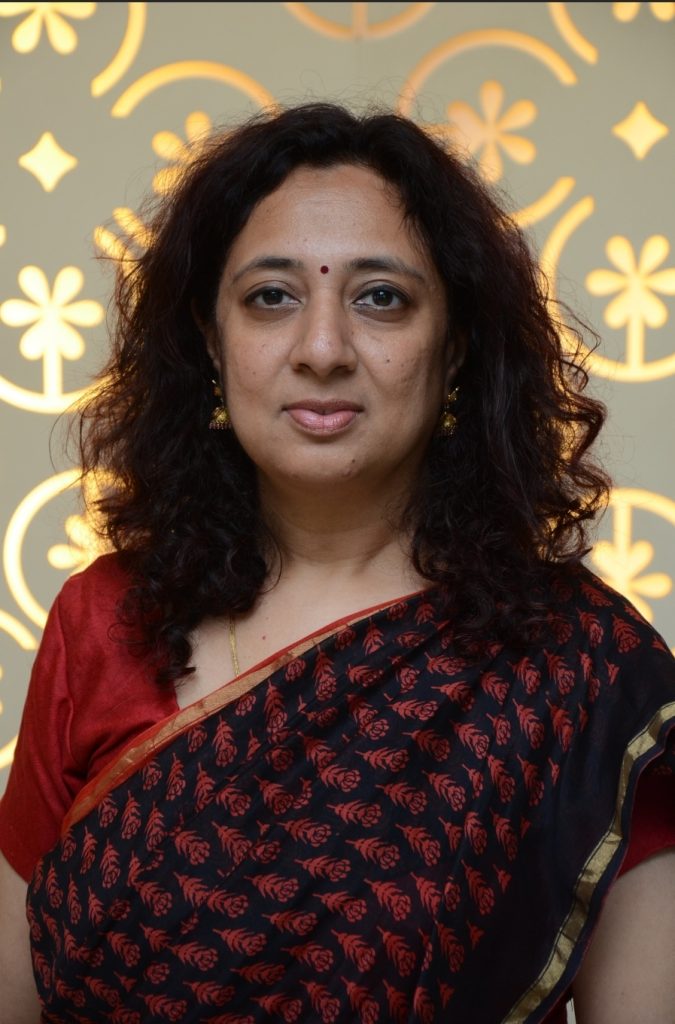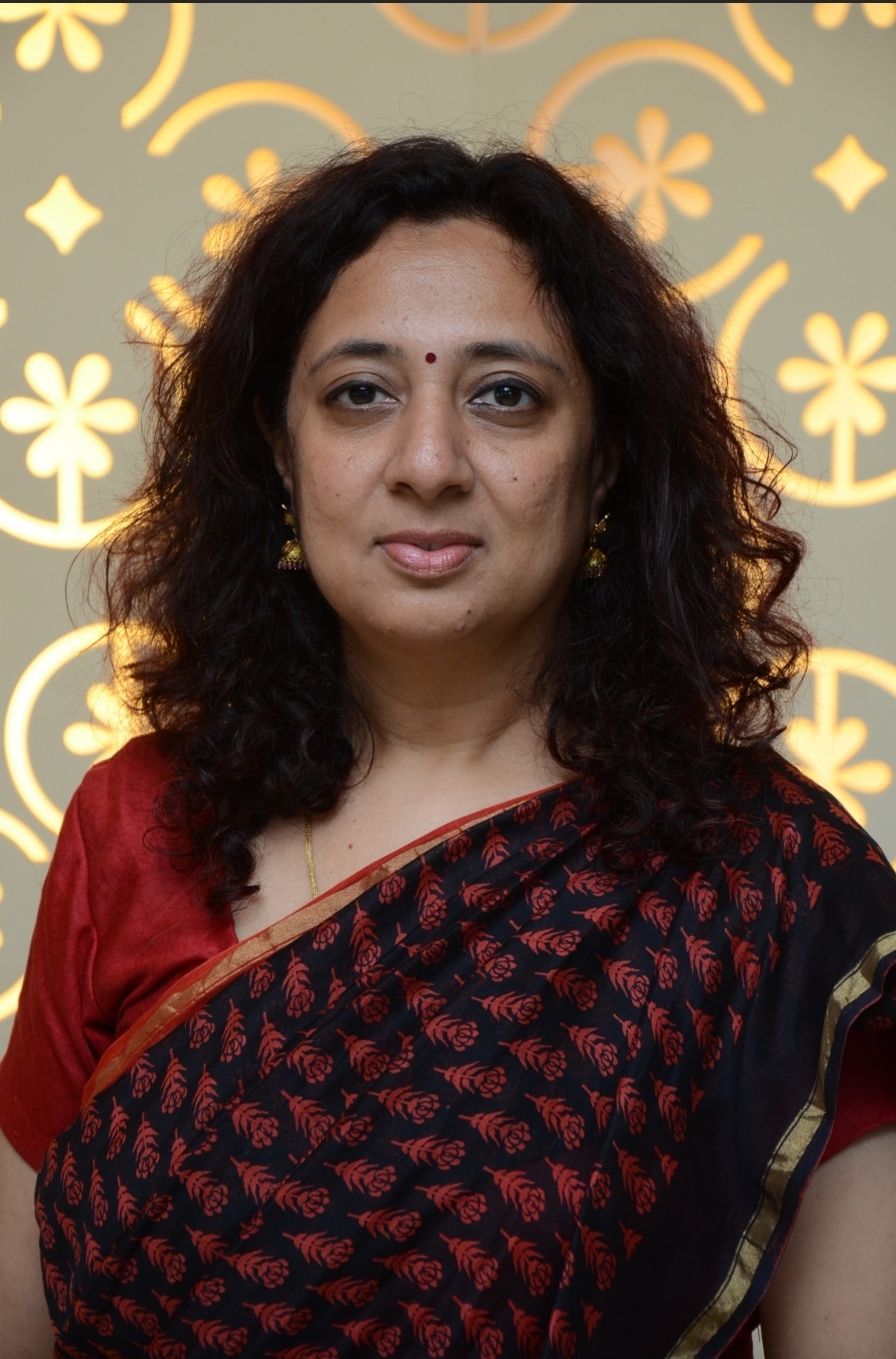In social impact, strengthening, sustaining, and scaling nonprofits is crucial. Social Lens Consulting, led by Vijaya Balaji, drives this transformation.
For over 14 years, Vijaya has guided 750+ organizations, created diagnostic tools, and built frameworks. In fact, this has helped a lot to enhance nonprofit efficiency and impact.
Through Social Lens Consulting, Vijaya has played a pivotal role in many programs. Like, The GROW Fund, Parivartan, The Social Impact Optimization Program, and Forbes Fellowship. Necessarily, ensuring that grassroots organizations receive the necessary support to thrive. In fact, her expertise in impact consulting, capacity strengthening, and organization development makes her a leading voice in the sector.
In this exclusive interview, we dive into Vijaya’s journey, insights, and vision for the future of social impact consulting. She shares:
- How nonprofits can overcome operational challenges,
- Why capacity building is key to sustainable change, and,
- What the sector needs to maximize impact in communities.
Let’s explore her inspiring story and Social Lens Consulting’s transformative work.
Section 1: The Journey & Mission of Social Lens Consulting
Q1. What inspired you to establish Social Lens Consulting, and what gap did you see in the nonprofit sector?
VB: The emerging opportunities that we were beginning to witness. I manage another organisation, toolbox INDIA Foundation who’s India operations I set up. We had realised that the Social Impact Sector was rapidly evolving and there was this emerging need in strengthening organisations for them to amplify and enhance the impact at the last mile.
Q2. How has your background with Toolbox India and other initiatives shaped your approach to capacity building?
VB: There were extremely valuable learnings that we drew from our work at toolbox INDIA which shaped our approach which has been built on experiential learning. The need to refine and reshape has come from our continued engagement with our NPO partners. The early work at toolbox taught us the fundamental challenges that NPOs face. While till date fundraising continues to occupy as an obstinate challenge, we have worked with NPOs through myriad programs that address key functions that add muscle to the fundraising function.
Core Principles
Q3. What are the core principles that define Social Lens Consulting’s approach to strengthening organizations?
VB: Collaborative and not consultative – our solutions are in collaboration with what orgs believe they need as opposed to a prescriptive approach.
Applicability – our methodology and way of working is to equip organisations with not just the knowledge but far more important is the skills and tools to enable them to apply and adopt.
Contextual – one size shoe does not fit at all and the context and the DNA of the organisation are taken into careful consideration.
Empathy – I think the most underscored value is empathy and running toolbox and Social Lens allowed us to understand the limitations, boundary conditions under which organisations operate and therefore the solutions developed would allow for not only strengthening but also make it a sustainable initiative for them.
Section 2: Challenges & Solutions in the Nonprofit Sector
Q4. Many nonprofits struggle with resource constraints. What strategies do you recommend for overcoming these challenges?
VB: Financial resource constraints is a constant challenge.This has a cascading effect on the extent orgs are able to invest in hiring and retaining talent apart from investing in other non program expenses. We definitely look at how they can build diversified funding channels and actively support them there. But there are other aspects that go beyond fundraising that they can explore through network building / collaborating with other orgs to explore cofounding opportunities
Q5. How do you help organizations balance day-to-day operations while focusing on long-term impact?
VB: Most orgs are stretched for time; committing to capacity building initiatives despite being very needed for their orgs which they recognise is difficult. with the pressures to deliver on programs and outcomes for which they are funded, diversion of time and attention are commonly cited reasons for their inability to balance the need and their daily operations. Our programs are designed taking into account not just the financial resources they can put in, but the time they have to devote and the pace/delivery and post program support offered allows orgs to work on adoption of these capacity building initiatives while balancing their daily operations. Our support allows them to move towards the envisioned direction of the strategic goals they have laid down for themselves.
Gaps
Q6. What are the most common gaps you see in nonprofit organizations, and how does Social Lens Consulting address them?
VB: The common gaps are largely in the managerial and functional skills that team members in organisations require today to continue to grow and thrive in the ecosystem today. The manner in which Non profit orgs are expected to function has changed with the emphasis on data driven approaches to measurement of programs, project management efficiency in program delivery, communication that goes much beyond primary donor communication. As the external forces are rapidly evolving, it is essential for NPOs today to bring in some of the best ways to build skills and efficiency in operations and stay rooted to the causes they support and the communities they serve.
Section 3: Capacity Building & Impact Optimization
Q7. Can you walk us through the methodologies and frameworks Social Lens Consulting has developed for capacity building?
VB: Our methodologies have evolved over time in the last 15 years. As I mentioned, a lot of our practice has been built on experiential learning. Having said that, we commenced toolbox INDIA’s work with a framework developed and lent to us by toolbox Belgium. This was supported by McKinsey Belgium. Over time we have built various frameworks. These range from diagnosing the persona of an organisation, Organisation Diagnostic tools and a Systems Thinking and Systems change framework. It is further customised based on the typology of the NPO.
Q8. The GROW Fund, Parivartan, and other initiatives focus on capacity enhancement. What impact have these programs had on nonprofits?
VB: With the disruption that the world witnessed with COVID 19, we realised that the most important thing was for organisations to become resilient and better state of readiness or future readiness. It doesn’t matter whether organisations were operating at scale with larger operating budgets or small organisations with very limited team members. The resilience and future readiness while would look differently for both these types of organisations, it was still necessary for them to build that. And that I believe is the true takeaway of capacity enhancement. That they are better equipped from building longer runaways of capital, enhanced skills in team members to systems and processes that are not people dependant.
Success
Q9. How do you measure success when working with organizations to optimize their impact?
VB: I think there are sort of measureable outcomes that look at both quantitative and qualitatively what it meant for organisations. The turn around time and reduction of time spent in non value added hours are direct efficiency measures. With human resources, we are able to understand not just attrition levels drop but how people within the team are advancing in their roles. We look at the impact it has on programs – ploughing back learning into programs which deliver better impact outcomes, project management efficiency that allows for program delivery with efficiency of spends. We also see a lot of qualitative outcomes – a better sense of shared vision and values in the organisation at all levels, an increased sense of “well being“ if I can say so.
Section 4: The Role of Technology & Innovation
Q10. How is technology reshaping the way nonprofits track, measure, and scale their impact?
VB: Technology is the driver for growth everywhere including NPOs. Tech aids in tracking programs, collecting information and measuring it with metrics that are universally understood. Data allows for orgs to discern insights and bring in program improvements through augmentation and Social Lens is a strong advocate of that. The choice of technology is not the main point to make here. The fact that Tech brings in efficiency and reporting which is essential for funding today.
Q11. Social Lens Consulting has developed diagnostic and assessment tools. How do these innovations support organizational growth?
VB: OD diagnostic tools that we have developed are to be used as self assessment tools. This is the larger shift we want to bring where we want orgs to be able to assess themselves like holding up a mirror to themselves. Rather than being put through a diagnostics by a consultant, a self assessment diagnostics tool allows orgs to fully understand how and where things are in their orgs. This allows them to define and redefine their priorities when it comes to org development which is the first important step in org growth.
Q12. Do you see AI and data analytics playing a bigger role in nonprofit impact measurement in the future?
VB: I think AI will shape a lot of things; I would proceed with extreme caution till we fully understand how best we can leverage it. Today I know of Impact reports that can be generated using AI. The balance between efficiency and authenticity and the need to use AI with integrity will come into play.
Section 5: Leadership & The Future of Social Impact
Q13. What qualities do you believe are essential for nonprofit leaders to drive lasting change?
VB: Persistence is something that is essential as driving change is extremely hard. NPO founders are tackling a multitude of things but that’s not the reason; all leaders do! Driving change which requires mindset changes in communities are not easy to drive and resources constraint is a constant.
Q14. From your experience, what are the key trends shaping the future of social impact consulting?
VB: Its an exciting time; there are new philantrophy products in the making, capital shifts as more domestic funding opens up, the introduction of robust technologies and data cultures in organisations and Social Leadership which is an emergent fascinating area of how leaders are getting shaped.
Q15. What advice would you give to emerging social entrepreneurs who want to make a real difference?
VB: I think first is to understand whom you are finally serving. Social Lens works as an intermediary like an ecosystem developer and not with the communities. But we carry the strongest belief that our purpose and our work will bring about change in the communities that are served by our clients and NPO partners. Grit is something every entrepreneur needs to have as part of their armoury. That has to apart from a strongest belief while walking with the team as you work each day.
Closing Statement
Through Social Lens Consulting, Vijaya Balaji has helped hundreds of nonprofits build resilience, enhance leadership, and create long-term impact. In fact, her expertise in organizational development and capacity strengthening has transformed the way social impact organizations operate. That is, moving from survival to sustainable growth.

We navigate a rapidly evolving landscape of philanthropy, technology, and social change. Vijaya’s insights remind us that true impact is not primarily just about resources. In fact, it is also about empowering organizations with the right skills, structures, and strategies.
We hope this conversation has provided valuable takeaways for those working in the social impact space. Moreover, to learn more about Social Lens Consulting and their programs, visit www.slens.co.
Stay tuned for more conversations with leaders shaping the future of impact and innovation on CXQuest.com!

